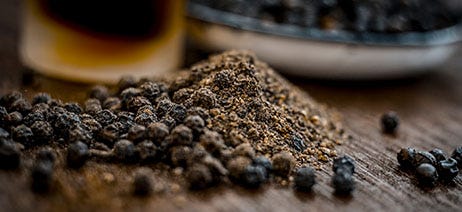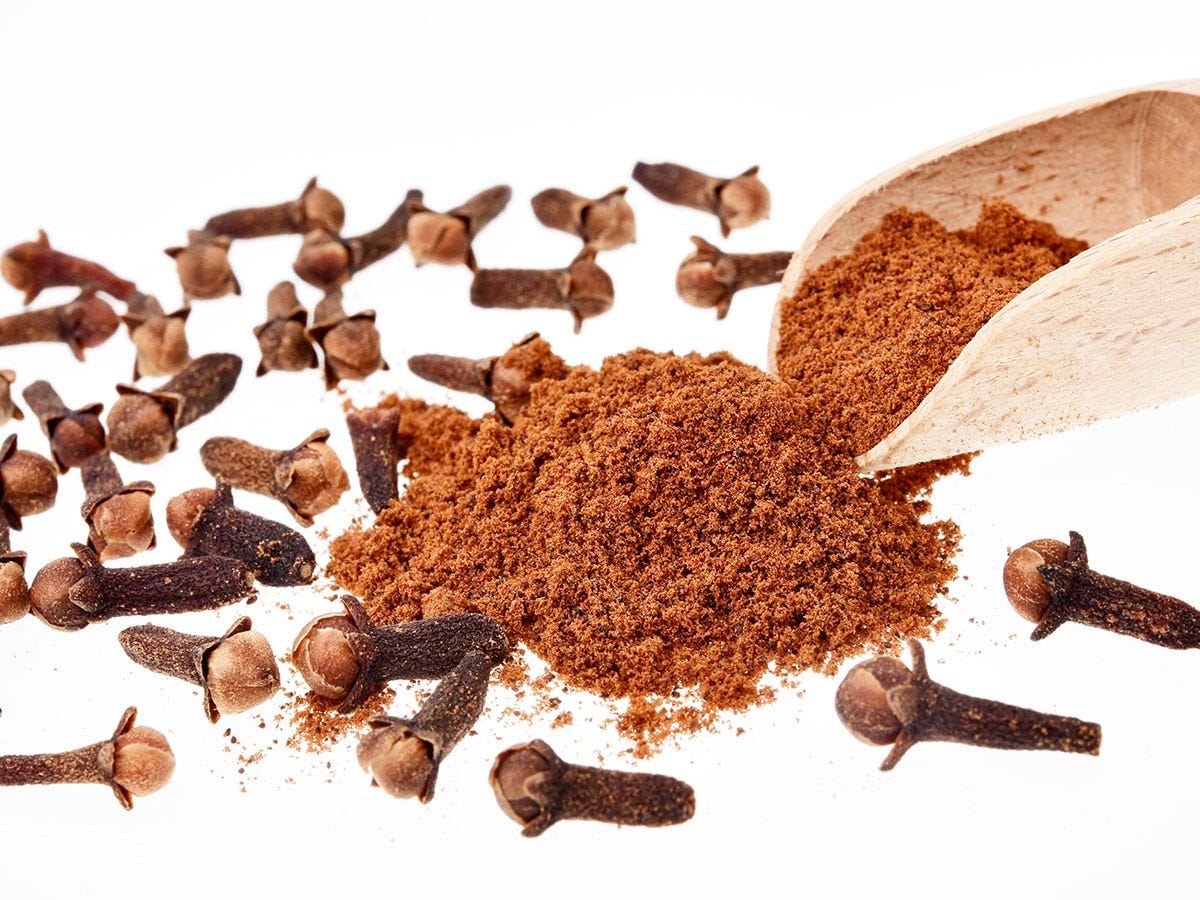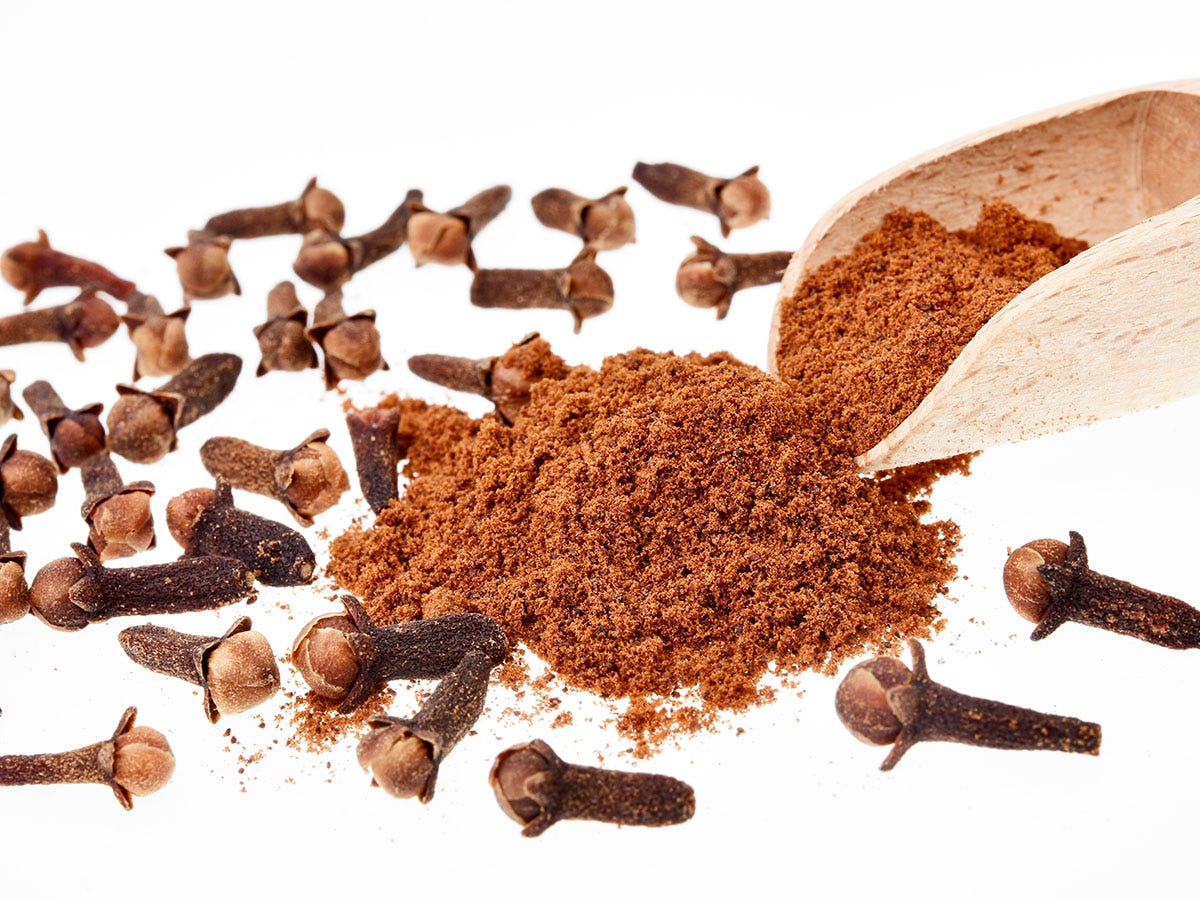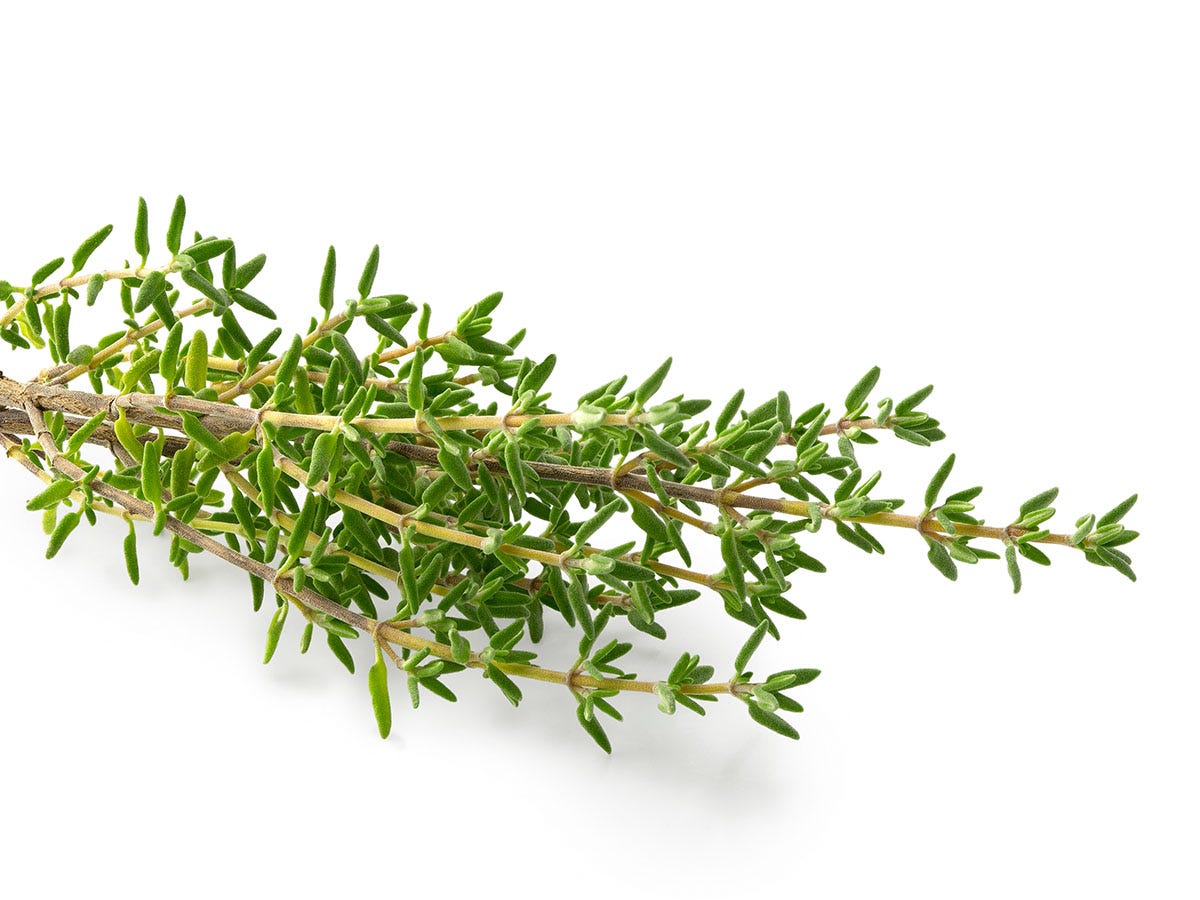
Beta-Caryophyllene: The Spicy Terpene
Cannabis connoisseurs are always intrigued by what makes the cannabis plant so unique, and terpenes are a big part of the story. Beta-caryophyllene stands out as a powerhouse terpene that’s common and incredibly versatile. It adds to the flavor and aroma of cannabis, and plays a significant role in how the plant interacts with our bodies. In this terpene guide, you'll learn:
- What is Caryophyllene?
- What Does Caryophyllene Smell and Taste Like?
- What Are the Potential Benefits of Caryophyllene?
- What Cannabis Strains Are High in Caryophyllene?
- FAQs About Caryophyllene
What is Caryophyllene?
Caryophyllene, also known as beta-caryophyllene or β-caryophyllene (BCP), is one of the most fascinating terpenes in cannabis. While it’s found in everyday items like black pepper, basil, thyme, and cinnamon, it’s much more than a flavor booster. It’s sometimes called the pepper terpene because of its warm, peppery, woody taste and aroma profiles—similar to cracked peppercorns.1
Caryophyllene is a terpene but also acts as a cannabinoid because it has a rare cyclobutane ring at the molecular level. This unique structure allows it to bind to the CB2 receptors in your body’s endocannabinoid system. It’s this dual role that sets it apart, it being the only terpene that can stimulate cannabinoid receptors. When caryophyllene interacts with the endocannabinoid system, it can reduce inflammation and provide pain relief without causing that “high” feeling.2


What Does Caryophyllene Smell & Taste Like?
The smell of caryophyllene is as bold as its impact. Think peppery, spicy notes mixed with hints of clove, ylang-ylang, and rosemary. Taste-wise, caryophyllene leans heavily into its spicy, peppery profile, with subtle traces of cinnamon.3 It’s no wonder that this terpene is also used as an insect repellent.4 One study even found that one formulation of beta-caryophyllene was more effective than DEET at keeping mosquitoes at bay.5
What Are the Potential Benefits of Caryophyllene?
Caryophyllene isn’t just about flavor—it also brings a host of potential health benefits to the table. Researchers are diving deep into its therapeutic effects, particularly on anxiety, inflammation, and pain relief.
Reduce Depression & Anxiety
Studies show that caryophyllene can activate CB2 receptors, which help regulate mood and stress responses. In animal models, this interaction has been linked to reduced symptoms of anxiety and depression.6
While more research is needed to confirm these effects in humans, the early results in animal models suggest that caryophyllene could someday complement traditional treatments for mood disorders. This terpene’s unique ability to target CB2 receptors without psychoactive effects also makes it a compelling area of study for non-intoxicating cannabis-based therapies.7
Lower Chronic Inflammation
Caryophyllene’s anti-inflammatory properties may make it a potential remedy for arthritis pain and other chronic inflammatory issues.8 By targeting CB2 receptors, caryophyllene may help reduce inflammation markers, relieving pain and swelling often associated with autoimmune conditions.9
Studies have highlighted its effectiveness in managing chronic inflammation in mice, suggesting it could complement traditional anti-inflammatory treatments. Its ability to work without psychoactive effects also may make it a promising option for long-term wellness and therapeutic use.10
Relieve Pain
Since it targets CB2 receptors, caryophyllene shows potential as a natural and effective pain reliever.11 This terpene is thought to reduce pain by modulating inflammatory responses and soothing nerve pain.12
Unlike THC, which activates CB1 receptors and produces psychoactive effects, caryophyllene’s interaction with CB2 receptors offers physical relief without the “high.”2 Ongoing studies suggest it could provide an alternative for managing conditions involving chronic pain.13
What Cannabis Strains Are High in Caryophyllene?
Caryophyllene is one of the most abundant terpenes in the cannabis plant, appearing in several popular strains. These strains deliver a potent dose of its peppery goodness alongside their unique effects.


Sour Diesel
Sativa-Dominant Hybrid
Sour Diesel, also called Sour Deez or Sour D, is a legendary sativa-dominant hybrid with a 90:10 sativa-to-indica ratio. Its origins are shrouded in mystery, with some cannasseurs believing that Mass Super Skunk and 91 Chemdog are the strain’s parents. Others think Mexican Sativa and a Chemdog phenotype created it. The Sour Diesel strain is super potent, with THC levels averaging at 26%, so newbies should beware. You can expect a very diesel flavor and aroma profile. This cannabis strain tastes like sweet candy mixed with skunky, peppery, earthy diesel, while it smells purely like intense diesel with a sweet lemon aftertaste.14
Chemdog
Indica-Dominant Hybrid
Chemdog, or Chemdawg, is a potent cannabis strain with THC levels reaching as high as 19%. It’s slightly indica-dominant, with 55% indica and 45% sativa genetics. Not a lot is known about the origin of this strain, but there are tales of a Grateful Dead concert, a breeder named Chemdog, and a bag of seeds. It’s rich in caryophyllene, giving it a spicy and peppery smell alongside its musky, earthy undertones. Flavor-wise, it’s similar, except you get a taste of pine with chemical diesel.15
Bubba Kush
Indica-Dominant Hybrid
Bubba Kush, also called Bubba OG Kush, BK, or Bubba, is an indica-dominant hybrid packed with caryophyllene, offering a spicy, herbal, earthy hash flavor with subtle sweet notes. It’ll remind you of a delicious café mocha—obviously, a bit stronger with an average of 25% THC. Bubba has 80% indica and 20% sativa genetics, thanks to its parents, which may be Afghani and OG Kush.16


FAQs About Caryophyllene
Caryophyllene adds more than flavor and aroma to your favorite cannabis plant strains—it’s a terpene with serious potential. Still, it’s natural to have a few questions. Let’s clear up the most common ones!
Are caryophyllene and beta-caryophyllene the same thing?
Beta-caryophyllene is actually just one type of caryophyllene. Another is alpha-caryophyllene, better known as humulene.17 Both have very similar flavors and aromas, but humulene happens to be the dominant terpene in the hop plant (which is part of the hemp plant family).18
Is caryophyllene a sativa or indica?
Neither! It’s a terpene created in the trichomes of the cannabis plant, and strains that are high in caryophyllene can be sativa or indica-dominant.
Does caryophyllene have intoxicating effects?
No, it doesn’t. On its own, caryophyllene interacts with just the CB2 receptors in your body, which don’t produce the “high” associated with THC.2


Purchasing Caryophyllene-Dominant Strains
If you’re ready to explore the potential benefits of caryophyllene, strains like Sour Diesel, Chemdog, and Bubba Kush are a great place to start. Known for their robust terpene profiles, these strains offer unique flavors and effects that showcase caryophyllene’s potential. Chat with your local Verilife budtender to find the perfect match or learn about other caryophyllene-rich strains.
Sources:
1. “Guide to Beta-Caryophyllene, The Peppery Terpene and Cannabinoid,” Leafwell, October 7, 2024, https://leafwell.com/blog/what-is-beta-caryophyllene-peppery-terpene-cannabinoid
2. “What is caryophyllene and what does this cannabis terpene do?” Leafly, January 17, 2024, https://www.leafly.com/news/science-tech/caryophyllene-terpene
3. “Caryophyllene,” ScienceDirect, https://www.sciencedirect.com/topics/agricultural-and-biological-sciences/caryophyllene
4. “Plant-based insect repellents: a review of their efficacy, development and testing,” National Library of Medicine, March 2011, https://pmc.ncbi.nlm.nih.gov/articles/PMC3059459/
5. “Excito-repellency and biological safety of β-caryophyllene oxide against Aedes albopictus and Anopheles dirus (Diptera: Culicidae),” Acta Tropica, December 8, 2020, https://amu.hal.science/hal-02941392v1
6. “β-Caryophyllene, a CB2 receptor agonist produces multiple behavioral changes relevant to anxiety and depression in mice,” National Library of Medicine, August, 2014, https://pubmed.ncbi.nlm.nih.gov/24930711/
7. “Your GoodRx Terpene Guide: 6 Common Cannabis Terpenes and Their Effects,” GoodRx, October 18, 2024, https://www.goodrx.com/health-topic/cannabis/terpene-guide
8. “Caryophyllene,” Weedmaps, https://weedmaps.com/learn/the-plant/caryophyllene
9. Protective Effects of (E)-β-Caryophyllene (BCP) in Chronic Inflammation,” National Library of Medicine, October 2020, “https://pmc.ncbi.nlm.nih.gov/articles/PMC7692661/
10. “β-Caryophyllene protects against alcoholic steatohepatitis by attenuating inflammation and metabolic dysregulation in mice,” National Library of Medicine, January 2018, https://pubmed.ncbi.nlm.nih.gov/28107775/
11. “Terpene Tuesdays: Everything You Need to Know About Caryophyllene Flavor, Fragrance, and Health Benefits,” ACS Laboratory, October 18, 2021, https://www.acslab.com/terpenes/terpene-tuesdays-everything-you-need-to-know-about-caryophyllene-flavor-fragrance-and-health-benefits
12. “Involvement of peripheral cannabinoid and opioid receptors in β-caryophyllene-induced antinociception,” National Library of Medicine, May 2013, https://pubmed.ncbi.nlm.nih.gov/23138934/
13. “The cannabinoid CB₂ receptor-selective phytocannabinoid beta-caryophyllene exerts analgesic effects in mouse models of inflammatory and neuropathic pain,” National Library of Medicine, April 2014, https://pubmed.ncbi.nlm.nih.gov/24210682/
14. “Sour Diesel Marijuana Strain,” Allbud, https://www.allbud.com/marijuana-strains/sativa-dominant-hybrid/sour-diesel
15. “Chemdawg Marijuana Strain,” Allbud, https://www.allbud.com/marijuana-strains/indica-dominant-hybrid/chemdawg
16. “Bubba Kush Marijuana Strain,” Allbud, https://www.allbud.com/marijuana-strains/indica-dominant-hybrid/bubba-kush
17. “What is humulene and what does this cannabis terpene do?” Leafly, July 28, 2020, https://www.leafly.com/news/science-tech/humulene-terpene
18. “Humulene,” Comprehensive Natural Products II, 2010, https://www.sciencedirect.com/topics/medicine-and-dentistry/humulene


